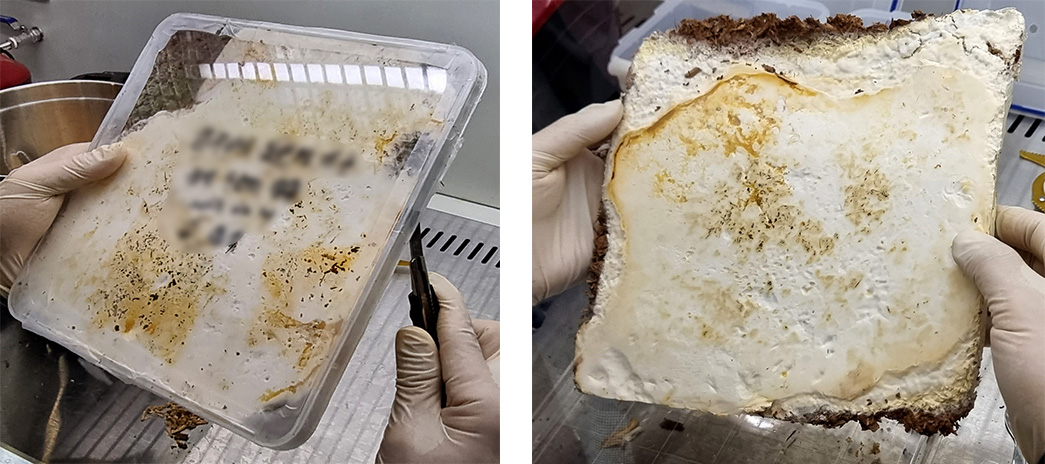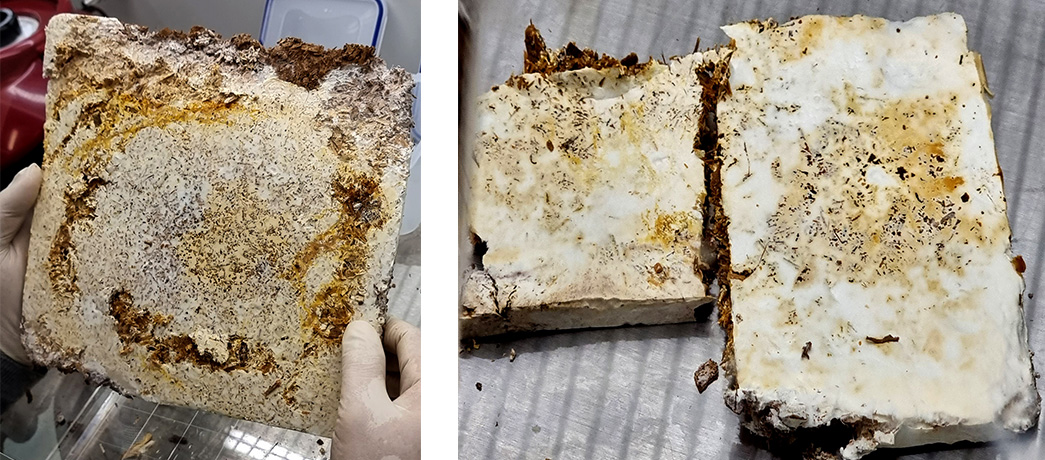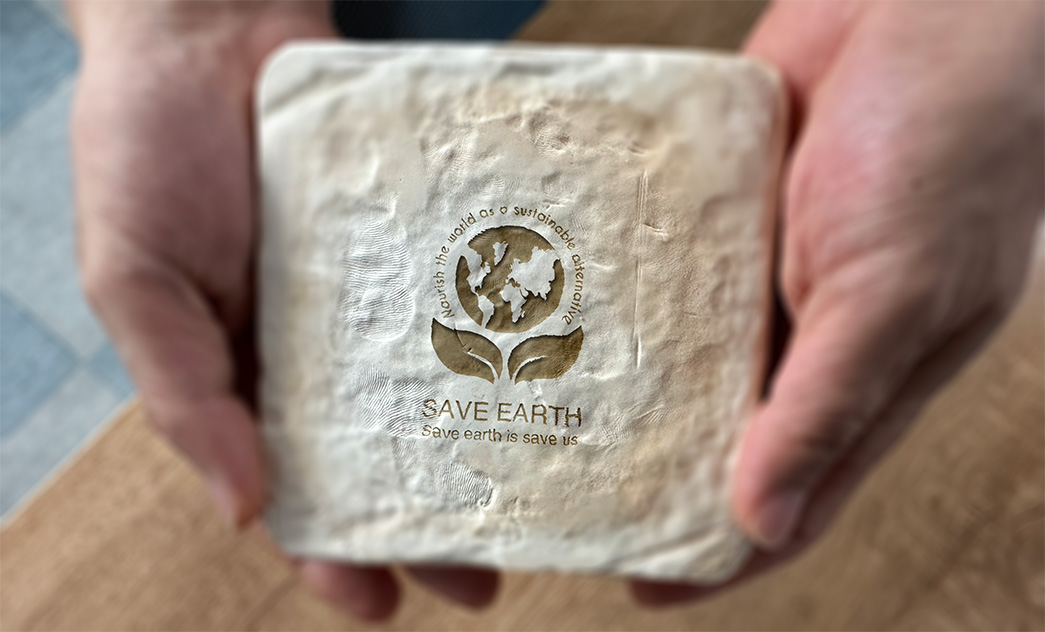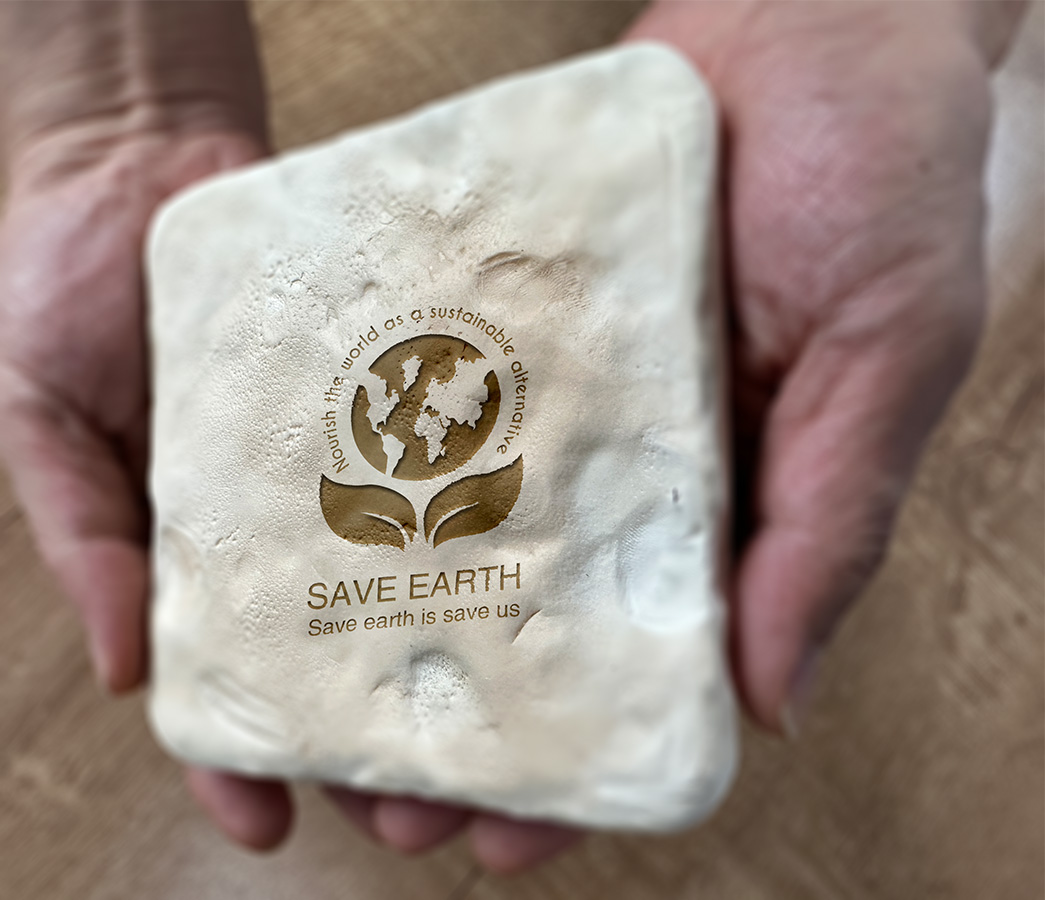Characteristics of Mycelium
 Characteristics of mushroom mycelium
Characteristics of mushroom mycelium

mushroom mycelium 01

Mushroom mycelium exists in the soil,
and the mushroom structure is a mass of mycelium
formed outside the soil to activate spores.
- It is a multicellular organism and has a cell wall made of chitin.
- It is a dependent nutrient that absorbs nutrients decomposed by exocrine enzymes.
- The body is made of mycelium and can maximize the surface area for nutrient absorption.
- It is not motile and moves to a new place through the growth of mycelium.
- Acts as a decomposer in the ecosystem.
Engineering natural materials within the motif of sustainability and biodegradation has become a notable material design concept in recent years.
Significant research effort has been devoted to developing materials from a wide range of natural resources such as cellulose1, silk protein2,3, eggshell membrane4, bamboo5, etc.
Natural materials offer unique combination of properties that emerge predominantly from their intricate hierarchical and fibrous architecture..
While understanding the material chemistry is fundamental, delineating the mechanistic detail and the structure-property correlations underlying these properties is crucial for material design and optimization.
Aligned with this motivation, we study here a unique biological material derived from fungal mycelium, the vegetative part and the root structure of fungi.
Mycelium has a porous structure composed of tubular filaments called hypha.
Typically, hyphae have diameters on the order of 1–30 μm depending
on the species and growth environment, and lengths ranging from a few microns to several meters.
Mycelium is one of the largest living organisms on Earth.
Mycelium grows out by apical tip expansion of hypha from a spore or an inoculum.
After an isotropic growth phase, hypha initiates random branching, forming fractal tree-like colonies.
Colonies interconnect randomly through hyphal fusion (anastomosis) to form a random fiber network structure.
The branching density and network topology are largely controlled by the nutritional and environmental conditions
The life of a mushroom mycelium 02
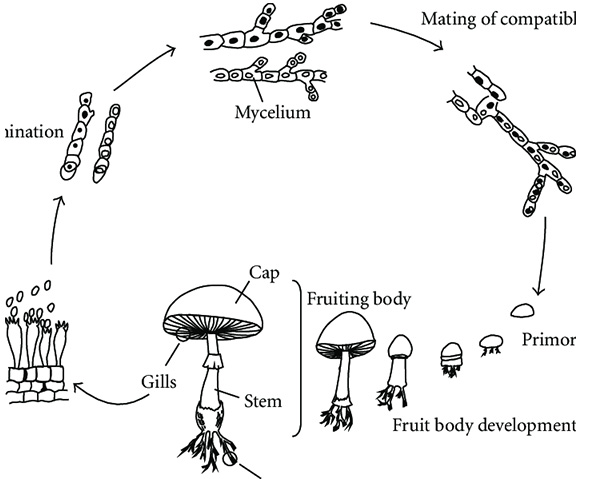
In reality,
there are many sub-steps of the process.
But this model provides a good overview
in terms of how fungi grows from birth
to death.
1. Spore PhaseMushroom spores are tiny microscopic reproductive units that are produced by fungi (as well as some types of plants and algae).
You can think of the spore phase as both the beginning and end of a mushroom’s life.
On one hand, a mushroom has fulfilled its purpose once it has fully matured and released its spores.
A mature mushroom will almost immediately begin to decompose after this process is done.
However, mushroom spores also represent the new life
for the next generation of mushrooms.
Spores are carried via wind or water until they ultimately settle on a surface with favorable conditions to start growing.

2. Germ PhaseDespite the name, this doesn’t have anything to do with bacteria or disease.
Mushroom spores can detect once they’re somewhere with proper moisture and food present.
Then they germinate and form something called a germ tube.
A germ tube is the first multicellular outgrowth from a single-celled spore.
It begins the process of differentiating and growing via mitosis.
3. Hyphae PhaseThe germ tube eventually begins to grow into something called hyphae.
These are structures that a fungus uses to begin to gather nutrients and energy, as well as grow even further.
Hyphae look like long, thin strings that spread out through a growing medium.
They release digestive enzymes that break down food to fuel more growth.
4. Mature Mycelium PhaseOnce hyphae begins to form a larger colony, we refer to it as mycelium. Mycelium are essentially the mushroom roots.
We refer to large, organized groups of hyphae as mycelium.
So we could say that all mycelium is made of hyphae. But not all hyphae have necessarily formed a mycelium colony yet, depending on how far along in their life cycle they are.
Mycelium will eventually grow and spread to consume all of the organic material in a particular substrate.
Mature mycelium then waits until it’s exposed to specific conditions, like specific carbon dioxide or temperature levels, as well as light and humidity.
At that point, they’ll begin to fruit and produce mushrooms.
Once the mushroom fully matures, it releases its spores and the process starts all over again.

